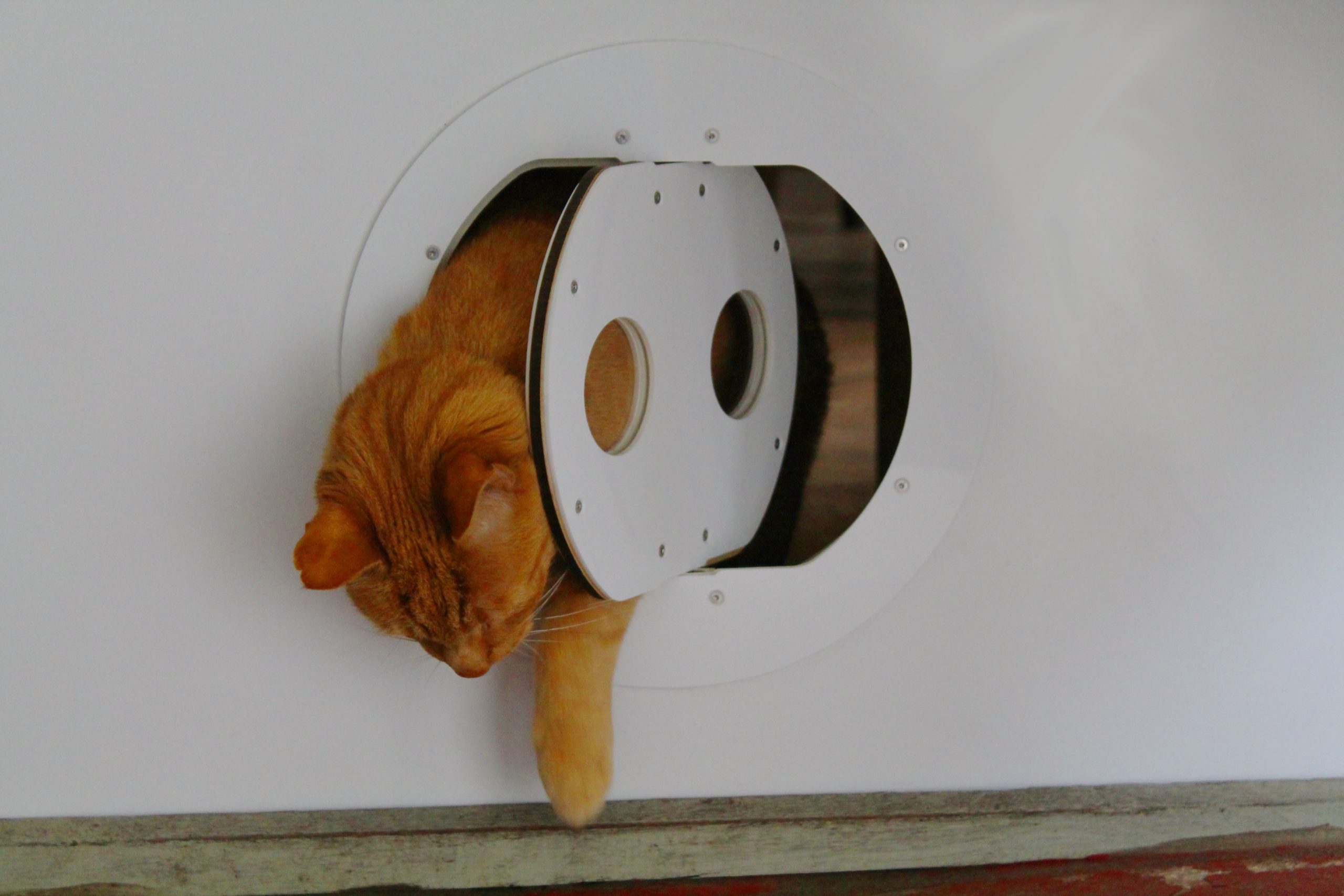Pet doors and cat flaps
Cat flaps have a very poor record in the world of draught Busters almost every cat flap we’ve ever seen has been letting in severe draughts not just through the flap itself but round the flap round the frame of the front flap through the frame of the flap I often made a very cheap plastic and not very durable. It is very difficult to seal one up however we do seal them up if there’s no longer a pet living at the property and with the permission of the owner we generally use silicone on the outside and acrylic sealant on the inside and we ensure that there are absolutely no draughts left. We frequently recommend removing pet flap altogether but there is a problem because now there’s a hole in the door and it’s not very easy to repair that whole for some doors new panels can be purchased or additional panels affixed to the inside and all the outside of the door, sometimes it’s possible to leave say the outside of the cat flap in place and put panel neatly across the inside of the door.
There is a lovely new invention on the market, PetFlap.
These work by using any air flow to shut the flap more tightly.
The Petflap is designed to press firmly shut against its frame with any change in air pressure, whichever side it comes from. High winds outside push the door shut; a breeze in the house through open windows and doors opening or closing inside the house push the Petflap shut too and wind cant blow it open.
The secret is in the Petflap’s assymetric cut: the frame extends slightly further inwards on one side than the other, on opposite sides front and back, giving the door a lip to press against no matter which direction the airflow is coming from. This gives the Petflap an ‘in’ and an ‘out’ side, which cats quickly get the hang of. It’s why the pet access door has its characteristic offset shape.
It’s easy for a pet to open the Petflap as there is no force for them to overcome. Airflow or a breeze present a broad force that pushes the door shut against the frame. A nose or paw (or hand, if you’re testing it before fitting) provides focussed pressure that allows the door to open easily.

